LG washing machine drain hose extension
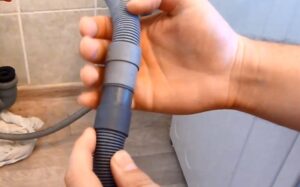 When purchasing a washing machine, almost everyone thinks in advance where the machine will be located. Sometimes it happens that the machine does not fit into the prepared place, and you have to install it differently. The main difficulty that users face is the large distance of the device from communications.
When purchasing a washing machine, almost everyone thinks in advance where the machine will be located. Sometimes it happens that the machine does not fit into the prepared place, and you have to install it differently. The main difficulty that users face is the large distance of the device from communications.
If the washing machine is moved far from the communication terminals, you will have to think about how to connect it to the water supply and sewerage system. We'll tell you how to extend the drain hose of an LG washing machine. Let’s figure out which method of “extending” a sleeve is the safest.
How will the hose be positioned?
When planning to lengthen a sleeve, you should immediately think about its future location. You cannot raise the drain hose higher than 90-100 cm from the floor level, otherwise the pump will not be able to pump out liquid from the machine. If you neglect this rule, the pump power will not be enough, and part of the waste water will constantly remain in the tank.
How to correctly position the drain hose is described in the instructions for your LG automatic machine.
When connecting the machine to the sewer, it is important to ensure sufficient tension on the corrugation. Close attention is paid to the top point of the sleeve - it should be 60-70 centimeters higher than its lowest level. This rule is typical for any washing machine, regardless of manufacturer and model.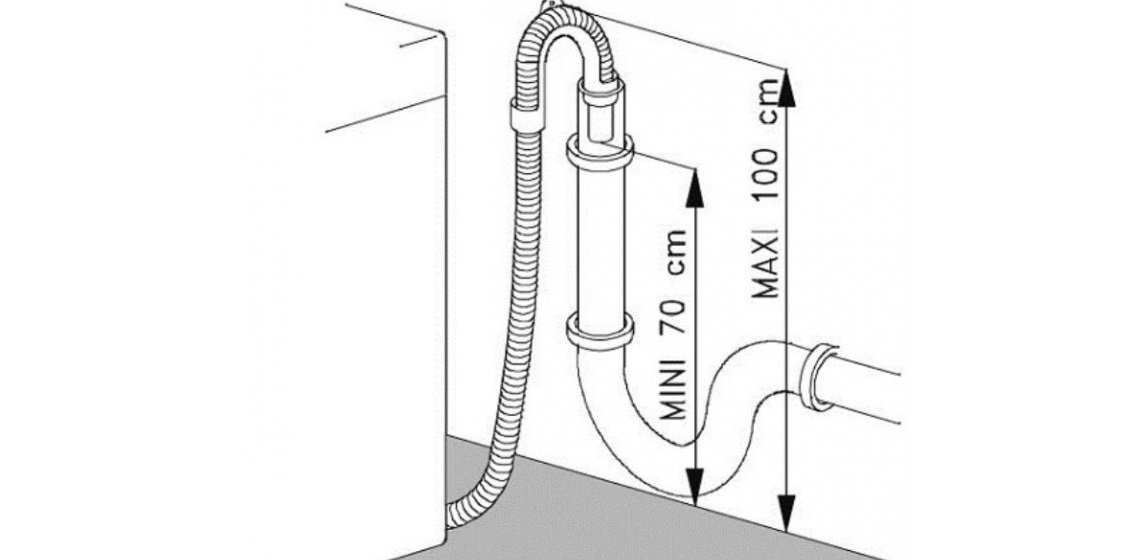
Replacement or extension: what to choose?
For most washing machines, the length of the drain corrugation included in the kit is one and a half meters, for some models it is as much as two meters. If the hose of your “home assistant” is even shorter, you don’t have to lengthen it, but simply replace it with a new one.You can buy components for LG machines in specialized stores or service centers. If you can’t find the right offline option, order the part online.
It is much safer to connect a new, solid hose of sufficient length to the machine than to extend it with additional elements. Then the likelihood of rupture and leakage of the sleeve will be minimized.
On washing machines that do not have a tray, it is very easy to replace the hose yourself. It is necessary to slightly tilt the machine, loosen the clamp securing the corrugation to the fitting, and unhook the tube from the machine. A new, longer drain hose is attached in the same place, the clamp is securely tightened with a screwdriver and pliers.
If this option does not suit you, you can combine two drain hoses together, and thereby achieve the optimal length. The hoses are connected with a special connector - you can buy the element in plumbing stores, it costs about $0.2. Additionally, the structure is secured with clamps. You can do without clamps if the connection itself is strong enough. But it is better, of course, to use additional fasteners. Then the likelihood that the hoses will come loose while draining the water will be minimized.
Let's use a connector
The connector is a plastic tube with a stopper in the middle. The ends of the hoses, which must be interconnected, are pulled onto the element from both sides. The algorithm of actions will be as follows:
- take the free end of the drain corrugation and put a clamp on it. The clamp should hang freely on the hose;
- pull this end of the sleeve onto the connector up to the limiter so that the corrugation fits as tightly as possible;
- tighten the clamp a couple of centimeters from the stopper to secure the connection;
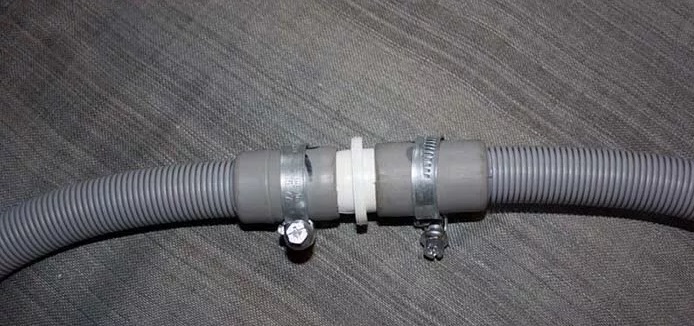
- put the clamp on the second drain hose;
- insert the end of the connector into the second hose. The corrugation should also stretch up to the limiter;
- secure this connection too by tightening the clamp.
Before connecting the extension hose to the siphon or sewer pipe, test it.
How to check the reliability of the connection? Point the end of the corrugation into the bathtub or sink and run the “Rinse + Drain” mode on the machine. During the “test” cycle, see if the hose is leaking at the joints. If everything is done correctly, there will be no leakage. If you notice drops of water at the joint, disassemble the structure and reattach all parts by tightening the clamps. It is advisable to treat the ends of the connector with a special moisture-resistant sealant.
Extend the hose using improvised means
If the need to lengthen the drain hose of your washing machine catches you at the dacha, and there is no opportunity to buy a special connector, you will have to replace the part with something at hand. A rubber hose or plastic tube is suitable for these purposes. Their diameter should be slightly smaller than the corrugation of the washer, and their length should be 7-10 cm.
If the tube is thin, you can increase its diameter by wrapping electrical tape. It is also better to coat the homemade connector with sealant before inserting it into the drain hoses. This will ensure maximum design reliability.
The further algorithm of actions will be the same as when using a magazine connector. One end of the hose is pulled onto the tube to the middle, the junction is fixed with a clamp. The same is done with the second corrugation. The main thing is to tighten the clamps tightly to avoid leaks when using the washing machine.
Interesting:
Reader comments
- Share your opinion - leave a comment
Categories
Washing machine repair


For buyers

For users

Dishwasher



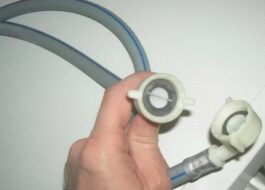

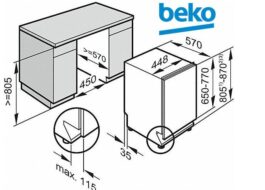











Add a comment